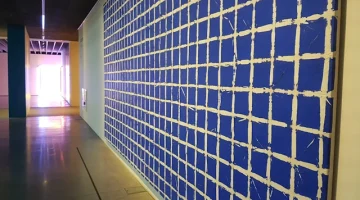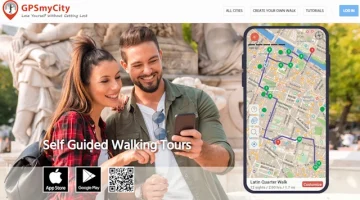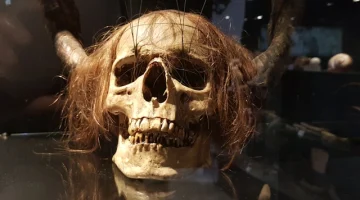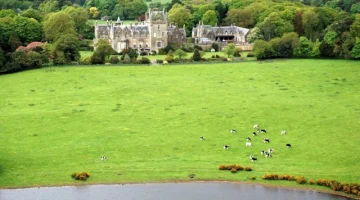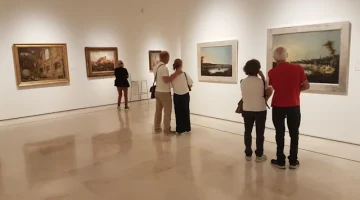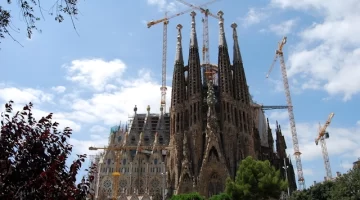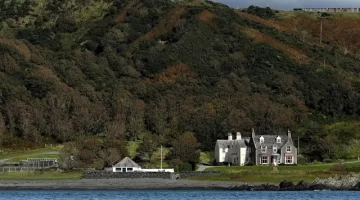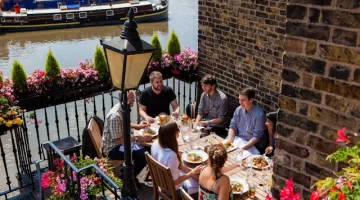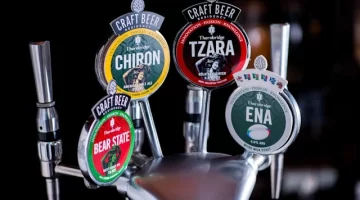El Djem and Mahdia
El Djem in Tunisia has a Roman amphitheater almost as big as the Coliseum in Rome, and not far from the seaside resort of Mahdia, with its beach and medina.

The Roman Amphitheatre at El Djem is one of the most surprising sights in Tunisia. It is almost as big as the Coliseum in Rome, which gives an idea of the town’s importance, yet in some ways it is more impressive than Rome’s Coliseum as it can be seen for miles around and dominates the little houses of this small town. The population today is about 21,000, yet the Coliseum can seat 30,000!
If it were not for the Coliseum, El Djem would be on the itinerary of few tourists to Tunisia. Today it’s a very ordinary small town, in a plain filled with olive trees and whose modern buildings will certainly not be attracting visitors in nearly two thousand years’ time.
Mahdia is a popular seaside resort, however, and it can be easily combined with El Djem to make quite a contrasting tour. With its medina, mosques and port, Mahdia will remind visitors of the other coastal resorts in this region, but as yet there is not as much tourist development. It’s about a 45-minute drive north-east of El Djem.
El Djem Coliseum

This is the largest single Roman ruin in Africa, with three tiers of seating standing almost 100 feet high. It is thought to have been built around 230-238AD by a local landowner named Gordian, who was the African pro-consul to Rome. He even declared himself Emperor of Rome when he was aged eighty, during a rebellion against taxes imposed by the Emperor Maximus. The rebellion was short-lived, as indeed was Gordian as it is said he soon committed suicide inside the Coliseum.
The Coliseum was never actually finished, partly due to lack of funds and partly due to the events that caused Gordian’s suicide, but it was much used nevertheless. Its building must have been a monumental task, as the nearest quarries were a good twenty miles away.
Visitors to Gordian’s memorial can climb to the top of the rows of seating (making it well worth paying the extra small fee for a camera) as well as exploring the underground passageways where animals were led into the arena to fight against prisoners, or through which the gladiators would walk before facing each other in fights to the death. A good day out for all the family!
TUNISIA TRAVEL TIP
If you want to go to the toilet then use the ones at the Coliseum or in the museum, which are much cleaner than those in the cafés round about.
Shopping in El Djem
El Djem is not a place to shop till you drop. There are the inevitable souvenir sellers, whose prices tend to drop till you shop. In Mahdia you will head for the medina, of course, which is an atmospheric old place, with fewer souvenir stalls than in places such as Sousse and Monastir.

What to Do in El Djem and Mahdia
The Coliseum. See above.
The Medina in Mahdia. A great place where you step back in time to the old Tunisia.
The Museum in El Djem. This is about a half-mile south of the Coliseum on the road to Sfax, in a replica of a Roman villa. It is famous for its mosaics, many of them from a villa which once stood next door to the site of the museum. The star exhibit in the main room is ‘Orpheus and the Animals’, and another one not to miss is one depicting the Nine Muses. Bear in mind that all these came from luxurious Roman villas in the area, which gives you an idea of the opulence of Roman life at that time.
Salakta Museum, Mahdia. Only small but worth a visit as it has some nice mosaics though not in the same league as El Djem.
Beaches
It’s a long walk to a beach from El Djem (about eight hours or a 45-minute drive!), but Mahdia’s beach is to the north-west of town and is as good as any along this coast.
OUR TUNISIA GUIDE
This Travel Guide to Tunisia is by award-winning travel writer Mike Gerrard. The guide covers Tunis, Carthage, Sidi Bou Said, archaeological sites like Dougga, excursions to the Sahara Desert, and all the main Tunisian beach resorts and tourist towns.
Amazon 5-Star Reviews
‘Interesting information straight to the point and informative, I like the mix of tourist information and cultural knowledge and it is not a lengthy read, just enough to inform you about Tunisia.’
‘Very useful information including things to see and do and even how to avoid local pit falls good overview of all the areas.’
‘Very useful guide for visiting Tunisia and very good value for the money. I found the book to be very informative.’
Read more on Amazon or click on the cover.

